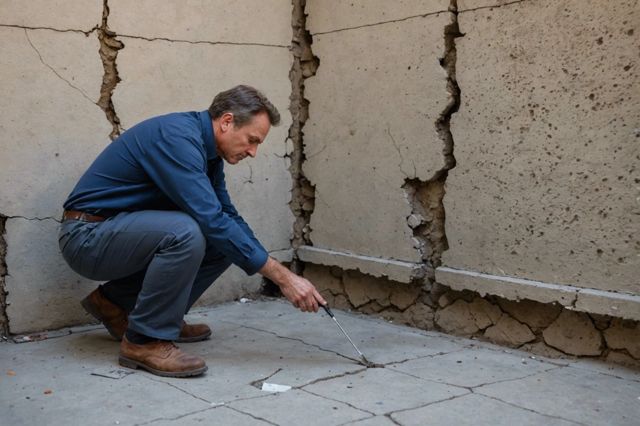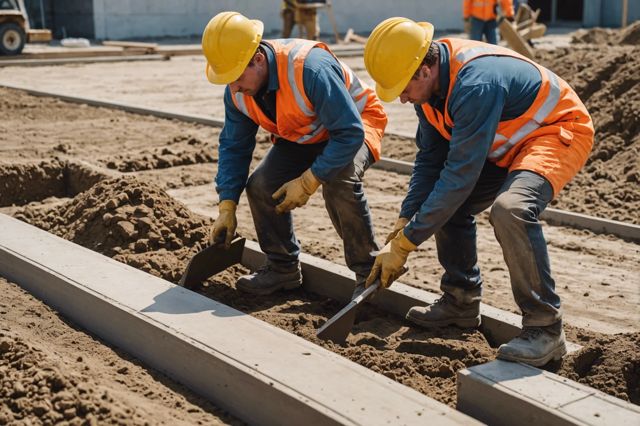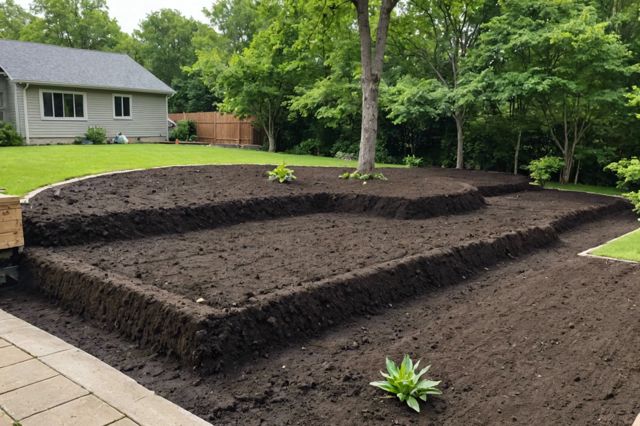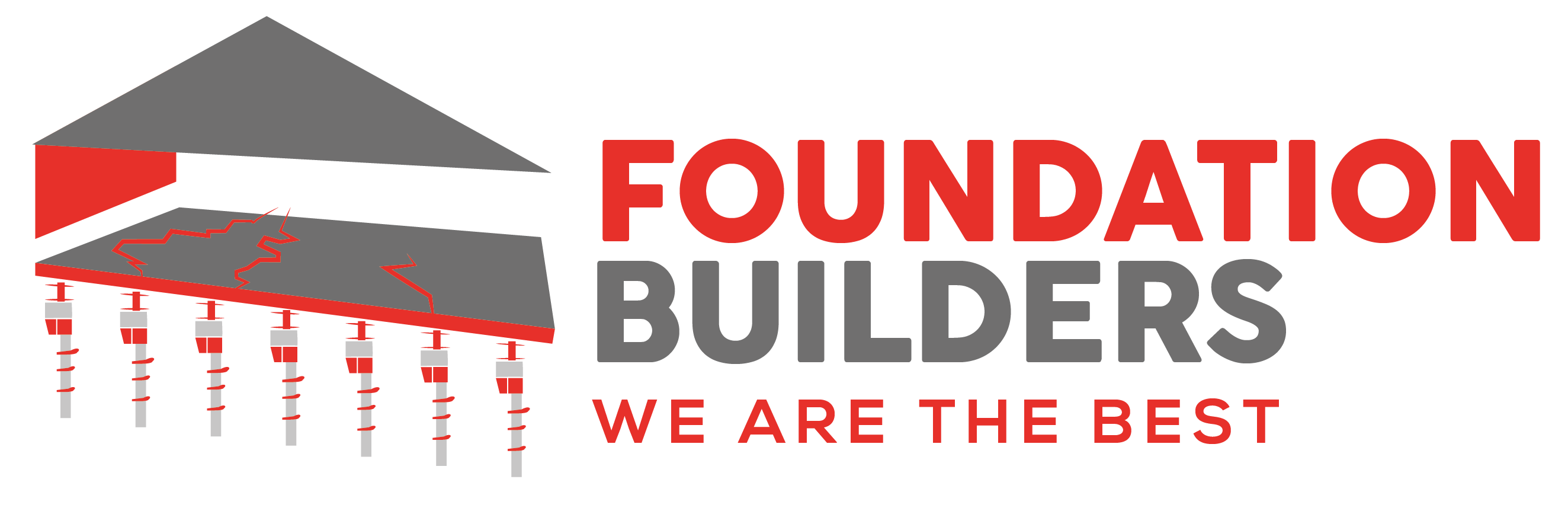The complete foundation replacement process involves excavating the old foundation, preparing the site with necessary forms and rebar, pouring and leveling concrete, and finally allowing the concrete to cure which strengthens the new foundation. Post-replacement, the area is backfilled, waterproofed, and landscaping restored to support the foundation’s longevity and prevent future issues.
1. Understanding Foundation Damage in Los Angeles
- The foundation of a building is crucial for its structural integrity. In Los Angeles, common issues include poor drainage, excess moisture, and seismic activity. These can cause cracks, sagging floors, and water intrusion in both residential and commercial buildings.
- Early signs of foundation problems are visible cracks in walls, uneven floors, and doors or windows that won’t close properly. These issues can lead to serious structural damage if not addressed quickly.
- Structural engineers are key in diagnosing foundation issues. They use advanced techniques to evaluate the integrity of a building and recommend solutions. Regular inspections and proper drainage can help prevent these problems.
- In Los Angeles, the risk of earthquake damage makes buildings particularly vulnerable. Earthquakes can cause buildings to shift and structural components to fail. Different types of earthquakes cause various damage patterns, including vertical and horizontal movement, leaning, and bending.
- Techniques for constructing earthquake-resistant buildings include tying the foundation to the building and using base isolation systems. These methods help the structure move as a unit during an earthquake, reducing damage. Materials like steel-reinforced concrete and structural steel are preferred for their flexibility and strength.
- For anyone concerned about the stability of a building, consulting a qualified expert is advised. This is especially important in areas prone to seismic activity, where specialized knowledge is necessary to ensure safety and compliance with local building codes.

2. Preparing for Foundation Replacement
Preparing for foundation replacement starts with a thorough site assessment. A professional evaluates the foundation to pinpoint issues like cracks or water damage. This step is vital to develop a repair plan tailored to your home’s needs, including the scope of work and cost estimate.
Next, obtaining the necessary permits is crucial. These permits ensure that the replacement process adheres to local safety and building codes. Skipping this step can lead to fines and work stoppage.
The initial phase of the actual foundation replacement involves securing the building. Temporary shoring is set up to stabilize the structure during the repair work, ensuring safety and integrity.
Remember, foundation replacement is a complex process that should only be handled by experienced professionals. It’s not a DIY project. Regular inspections and preventive measures are recommended to maintain the foundation’s integrity over time.
3. The Foundation Replacement Process
- Excavation: The foundation replacement begins with excavation. This involves removing soil to the required depth and width to ensure a stable base for the new foundation. During this phase, safety measures are critical, especially in urban areas like Los Angeles, where other building foundations are close by.
- Preparation: Once excavation is complete, the site is prepped for the foundation. This includes leveling the ground, removing debris, and setting up the necessary forms and rebar. These structures help mold the concrete and reinforce the foundation, providing additional stability.
- Pouring Concrete: The concrete mix, which includes cement, water, and aggregate, is prepared based on specific requirements. It’s crucial to pour the concrete soon after mixing to maintain its integrity. The concrete is then poured into the forms, and professionals work quickly to level the surface.
- Finishing Touches: After pouring, the concrete surface is smoothed with trowels, and control joints are cut into the concrete to prevent cracking as it dries and settles. Optionally, a curing compound can be applied to help the concrete retain moisture, ensuring even curing.
- Curing: The final step is curing, which allows the concrete to hardly and gain strength. This process can take several days to weeks, depending on the climate and size of the foundation. During this time, maintaining the correct moisture levels is vital for achieving a durable foundation.
This detailed overview covers the critical steps in the foundation replacement process, focusing on techniques and materials specific to settings like Los Angeles.

4. Finishing Touches and Post-Replacement Considerations
- After the foundation replacement, the area around the new foundation is backfilled. This involves replacing the soil that was removed during construction, ensuring it’s compacted properly to support the foundation.
- Waterproofing is a key step to protect the foundation from water damage. Techniques like applying waterproof coatings or installing drainage systems like French drains help keep the basement dry and prevent future issues.
- Landscaping is restored or redesigned to not only improve curb appeal but also to support the foundation’s health. Proper grading and the choice of plants can ensure water flows away from the foundation, reducing risk.
- Long-term maintenance is crucial for the new foundation’s longevity. Regular inspections should be conducted to catch and address any potential problems early. This can include checking for cracks or shifts in the foundation and monitoring for signs of water intrusion.
- Homeowners are advised to engage with professionals for periodic evaluations. Foundation Builders offers inspections and maintenance services to help keep your foundation in top condition. Regular professional assessments help in maintaining the integrity of the foundation over time.

FAQ
What are common causes of foundation damage in Los Angeles?
Foundation problems in Los Angeles often stem from poor drainage, excess moisture, and seismic activity. These issues can lead to cracks, sagging floors, and water infiltration in both residential and commercial structures.
What are the early signs of foundation damage?
Visible cracks in walls, uneven floors, and issues with doors or windows not closing properly are early signs of potential foundation damage.
Who should assess foundation problems and what techniques are used?
Structural engineers are essential for diagnosing foundation issues. They employ advanced evaluation techniques to assess the building’s integrity and suggest appropriate solutions.
How do earthquakes affect building foundations in Los Angeles?
Earthquakes can cause buildings to shift and structural components to fail, with different types of earthquakes resulting in varying damage patterns, such as vertical and horizontal movement, leaning, and bending.
What construction techniques enhance earthquake resistance?
Constructing earthquake-resistant buildings involves tying the foundation to the building and utilizing base isolation systems. These methods enable the building to move as a unit during seismic activity, helping to mitigate damage.
What are the initial steps in foundation replacement?
The process begins with a thorough site assessment to identify existing problems followed by acquiring necessary permits to ensure the work complies with local safety and building codes. Temporary shoring is then installed to stabilize the building during repairs.
What does the excavation process involve during foundation replacement?
Excavation involves removing soil to a required depth and width to prepare a stable base for the new foundation. This phase includes crucial safety measures, especially in populated areas.
How is concrete used in the foundation replacement process?
After preparing the site with necessary forms and rebar, concrete is mixed and poured into forms. This is followed by leveling of the surface and application of a curing compound to ensure even curing.
What steps are taken after pouring the concrete?
The concrete undergoes curing, a process that allows it to harden and gain strength, which can take from several days to weeks depending on the climate and the size of the foundation.
What considerations are there post-foundation replacement?
Post-replacement, soil around the new foundation is backfilled and compacted. Waterproofing measures and drainage systems are implemented to protect against water damage. Lastly, landscaping is restored, and regular maintenance and inspections are recommended to ensure the longevity of the foundation.

